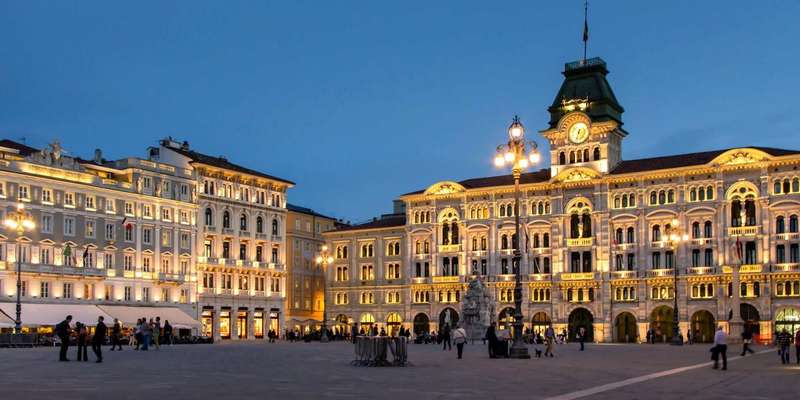- Home
- Useful Tips
- Avoiding crowds at Trieste's...
Trieste’s museums are cultural treasures, but overcrowding can turn a day of exploration into a frustrating shuffle through packed galleries. Over 60% of visitors report feeling rushed or unable to properly view exhibits during peak hours at the Revoltella Museum or Miramare Castle’s collections. The pressure of limited-time vacations makes wasted hours in queues particularly painful, especially when traveling with children or elderly companions. Local residents know the rhythms that let you appreciate Carlo Sbisà’s artworks in peace or study ancient Roman artifacts without jostling for position – knowledge most guidebooks never mention. These crowd-related challenges aren’t just about comfort; they determine whether you leave with meaningful connections to Trieste’s unique Austro-Italian heritage or just photos of other people’s backs.


Why Trieste’s museums feel overcrowded (and when they’re not)
The congestion plaguing Trieste’s top museums stems from three predictable factors: cruise ship arrivals, midday tour groups, and seasonal weather patterns. Miramare Castle sees 80% of its daily visitors between 10:30 AM and 2:00 PM, coinciding with shore excursions from the nearby port. Meanwhile, the Civic Museum of Oriental Art becomes surprisingly tranquil after 3:00 PM as day-trippers return to Venice or Ljubljana. Summer weekends bring regional tourists escaping inland heat, while winter weekends attract cultured locals – but rainy Tuesdays? You might have entire galleries to yourself. Harbor-facing institutions like the Sartorio Museum get busier when bad weather drives visitors indoors, whereas the Risiera di San Sabba memorial’s solemn atmosphere naturally regulates foot traffic. Understanding these invisible schedules helps you align your visits with the museum’s natural quiet periods rather than fighting against them.
Local-approved strategies for crowd-free museum experiences
Triestini cherish their cultural institutions too much to abandon them to tourists, so they’ve developed subtle tactics for peaceful visits. Many residents target the ‘shoulder hour’ – that magical 45 minutes before official closing when guards stop admitting large groups but you still have ample time to explore. The Revoltella Museum’s upper floors, containing its most impressive modern art pieces, are least visited in the final hour as crowds cluster near ground-level exits. Another insider move involves combining lesser-known museums with popular ones; starting your day at the specialized Museo Petrarchesco Piccolomineo means you’ll arrive at the Archaeological Museum just as the initial wave departs for lunch. For those willing to embrace Trieste’s coffee culture, an early morning cappuccino at a nearby historic café lets you enter right at opening while others are still scrambling for parking.
Beyond the big names: Underrated alternatives with zero queues
While guidebooks obsess over Miramare Castle’s opulence, Trieste shelters extraordinary collections that even many locals overlook. The Museo della Comunità Ebraica di Trieste offers profoundly moving exhibits on Jewish history in a serene setting, typically welcoming fewer than twenty daily visitors. Up the hill in San Giusto Castle, the Arms Museum displays medieval weaponry without the glass-case crowding of larger European collections. True connoisseurs seek out the Museo Joyce, where intimate exhibits about James Joyce’s Trieste years reside in his actual former apartment. These hidden venues don’t just provide breathing room – they deliver more authentic interactions with staff curators and opportunities to examine artifacts up close. Best of all, their modest size means you can appreciate everything thoroughly in under an hour, leaving time for a relaxed prosecco at a nearby osmiza afterward.
Timing your tickets: When to book (and when to walk in)
Contrary to popular belief, not every Trieste museum requires advance reservations – but knowing which ones do saves hours of frustration. Miramare Castle’s timed entry slots sell out days ahead during summer, while the Natural History Museum’s fascinating whale skeleton exhibit rarely needs pre-booking except on holiday weekends. A little-known municipal program offers combined tickets for multiple civic museums valid over several days, allowing you to pop into the Teatro Romano museum during lulls between cruise ship arrivals. Many smaller institutions participate in the ‘Trieste Card’ program, which not only skips lines but includes tram fares to reach these venues before crowds build. For ultimate flexibility, target Wednesday afternoons when student groups have left but weekend visitors haven’t yet arrived, creating a sweet spot for spontaneous cultural exploration.



